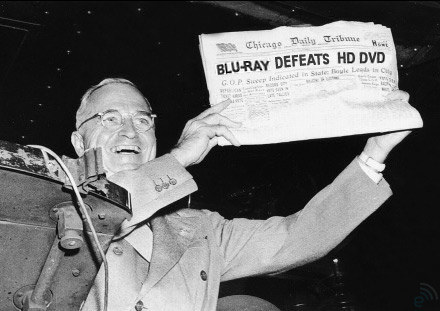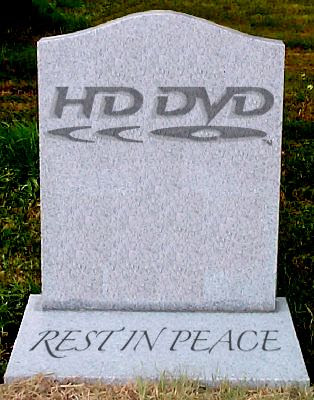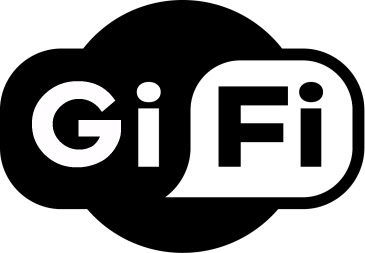
The Morph ConceptThe demo video:
Featured in The Museum of Modern Art “Design and The Elastic Mind” exhibition, the Morph concept device is a bridge between highly advanced technologies and their potential benefits to end-users. This device concept showcases some revolutionary leaps being explored by Nokia Research Centre (NRC) in collaboration with the Cambridge Nanoscience Centre (United Kingdom) – nanoscale technologies that will potentially create a world of radically different devices that open up an entirely new spectrum of possibilities.Morph concept technologies might create fantastic opportunities for mobile devices:
- Newly-enabled flexible and transparent materials blend more seamlessly with the way we live
- Devices become self-cleaning and self-preserving
- Transparent electronics offering an entirely new aesthetic dimension
- Built-in solar absorption might charge a device, whilst batteries become smaller, longer lasting and faster to charge
- Integrated sensors might allow us to learn more about the environment around us, empowering us to make better choices
In addition to the advances above, the integrated electronics shown in the Morph concept could cost less and include more functionality in a much smaller space, even as interfaces are simplified and usability is enhanced. All of these new capabilities will
unleash new applications and services that will allow us to communicate and interact in unprecedented ways.Flexible & Changing Design
Nanotechnology enables materials and components that are flexible, stretchable, transparent and remarkably strong. Fibril proteins are woven into a three dimensional mesh that reinforces thin elastic structures. Using the same principle behind spider silk, this elasticity enables the device to literally change shapes and configure itself to adapt to the task at hand. A folded design would fit easily in a pocket and could lend itself ergonomically to being used as a traditional handset. An unfolded larger design could display more detailed information, and incorporate input devices such as keyboards and touch pads.
Even integrated electronics, from interconnects to sensors, could share these flexible properties. Further, utilization of biodegradable materials might make production and recycling of devices easier and ecologically friendly.Self-Cleaning
Nanotechnology also can be leveraged to create self-cleaning surfaces on mobile devices, ultimately reducing corrosion, wear and improving longevity. Nanostructured surfaces, such as “Nanoflowers” naturally repel water, dirt, and even fingerprints utilizing effects also seen in natural systems.Advanced Power Sources
Nanotechnology holds out the possibility that the surface of a device will become a natural source of energy via a covering of “Nanograss” structures that harvest solar power. At the same time new high energy density storage materials allow batteries to become smaller and thinner, while also quicker to recharge and able to endure more charging cycles.Sensing The Environment
Nanosensors would empower users to examine the environment around them in completely new ways, from analyzing air pollution, to gaining insight into bio-chemical traces and processes. New capabilities might be as complex as helping us monitor evolving conditions in the quality of our surroundings, or as simple as knowing if the fruit we are about to enjoy should be washed before we eat it. Our ability to tune into our environment in these ways can help us make key decisions that guide our daily actions and ultimately can enhance our health.
[via Nokia]
Before reading any further, I would definitely recommend you to WATCH THE VIDEO! Nothing’s better than a good old video to convey what Morph can do…
Stunned!?! Well, not exactly, since it’s not a real demo of what Morph can do, but rather a preview of what the Morph “nanodevice” (think supercar) can perform. What’s more interesting is that most the technologies demoed ALREADY exist. The self-cleaning & hydrophobic material is currently being implemented in newer cars & building facades. The super-stiff nanotubes of carbon already exist & so do those ultra-flexible nanomaterials. Prototype nanosensors can “sense” an immensely large array of things, but it’s still in the lab. As for the “nanograss,” I have yet to see it surface, but it’s not more than a couple years away - but if it did, it would be next GREEN REVOLUTION!!! (imagine everything being powered by those nanograsses that are omnipresent on every surface!)
Where the concept blends into fiction is with the electronics! For the time being, we still can’t make “nanoelectronics.” Nor can we make them stretchable, stiff or imbue them with morphing abilities. Can you imagine shrinking your battery, antenna, screen or keypad to an infinitely small size. But I trust technology - that should be possible in less than 2 decades (I give it a maximum of 50 years!).
Nanotechnology is the future! Just like the Integrated Circuit completely lifted up our civilization into another era, nanotechnology will be the dawn of a world of infinite opportunity - finally living with harmony with planet Earth?

 The last format war is over. HD DVD has been defeated by Blu-Ray. Everyone had seen this coming, except from Toshiba…
The last format war is over. HD DVD has been defeated by Blu-Ray. Everyone had seen this coming, except from Toshiba… Why HD DVD died?
Why HD DVD died? Technically, Blu-Ray is superior to HD DVD. It’s twice more in size - 25/50GB compared to 15/30GB. & it has a faster data transfer rate. But HD DVD is more user-friendly since it’s region-free & is much much cheaper than Blu-Ray. & it has Microsoft’s HDi interface…
Technically, Blu-Ray is superior to HD DVD. It’s twice more in size - 25/50GB compared to 15/30GB. & it has a faster data transfer rate. But HD DVD is more user-friendly since it’s region-free & is much much cheaper than Blu-Ray. & it has Microsoft’s HDi interface… For once, it wasn’t the consumers who decided which HD optical disc won the format war. After losing the VHS v/s Betamax war, Sony couldn’t afford another defeat & it decided to bet everything on Blu-Ray - by making Blu-Ray standard on all PS3s - a highly risky bet. Albeit PS3s are not that cheap, but they contributed significantly to Blu-Ray players overall sales. Toshiba on the other hand, was betting on the early-release of its HD DVD players.
For once, it wasn’t the consumers who decided which HD optical disc won the format war. After losing the VHS v/s Betamax war, Sony couldn’t afford another defeat & it decided to bet everything on Blu-Ray - by making Blu-Ray standard on all PS3s - a highly risky bet. Albeit PS3s are not that cheap, but they contributed significantly to Blu-Ray players overall sales. Toshiba on the other hand, was betting on the early-release of its HD DVD players. After almost a year of stalemate, whereby Blu-Ray kept its steady ascent in sales while HD DVD players kept getting cheaper… a major breakthrough came through the movie studios’ decision to stop dual-format sales. Sony managed to entice Warner into the Blu-Ray camp for an undisclosed sum (reports put it at $400 Million!). HD DVD meanwhile decided to radically slash prices, with some players being sold at $99. When Wal-Mart, Best Buy & other retailers followed Warner Studios, everyone knew it was over. & finally Toshiba declared HD DVD officially dead on the 15th of Feb.
After almost a year of stalemate, whereby Blu-Ray kept its steady ascent in sales while HD DVD players kept getting cheaper… a major breakthrough came through the movie studios’ decision to stop dual-format sales. Sony managed to entice Warner into the Blu-Ray camp for an undisclosed sum (reports put it at $400 Million!). HD DVD meanwhile decided to radically slash prices, with some players being sold at $99. When Wal-Mart, Best Buy & other retailers followed Warner Studios, everyone knew it was over. & finally Toshiba declared HD DVD officially dead on the 15th of Feb. The winners:
The winners: The format of the future is the Holographic Versatile Disc (HVD) which can hold up to 3.9TB (3900GB) of data! I know you must be thinking that who would need such a gigantic amount of storage, when the biggest hard disk you can buy is just 1TB! But technology changes faster that you can say “huh?” - just like
The format of the future is the Holographic Versatile Disc (HVD) which can hold up to 3.9TB (3900GB) of data! I know you must be thinking that who would need such a gigantic amount of storage, when the biggest hard disk you can buy is just 1TB! But technology changes faster that you can say “huh?” - just like  HVD belongs to the next generation of storage media - 3D optical data storage. DVDs are considered 2D while HVD uses holograms. Holograms use several layers of images to make an image appear 3D - just like those shiny “genuine” holograms that display different images at different angles (More on
HVD belongs to the next generation of storage media - 3D optical data storage. DVDs are considered 2D while HVD uses holograms. Holograms use several layers of images to make an image appear 3D - just like those shiny “genuine” holograms that display different images at different angles (More on  Again using the example of the
Again using the example of the  Another example is GiFi. Researchers at the Melbourne University have managed to achieve speeds of up to 5Gbps (0.63GB/s) on a new wireless chip. The device has a short-range like Bluetooth, but uses only a 5mm square chip & a 1mm antenna that uses less than 2 watts of power! GiFi operates on the unused 60GHz frequency & is expected to have a cost-per-chip of $10. Watch out for the future demise of Bluetooth.
Another example is GiFi. Researchers at the Melbourne University have managed to achieve speeds of up to 5Gbps (0.63GB/s) on a new wireless chip. The device has a short-range like Bluetooth, but uses only a 5mm square chip & a 1mm antenna that uses less than 2 watts of power! GiFi operates on the unused 60GHz frequency & is expected to have a cost-per-chip of $10. Watch out for the future demise of Bluetooth. & finally... Japan has launched the Kizuna satellite that promises Internet speeds up to 1.2Gbps for Japanese islands… Not a total of 1.2Gbps… but a 1.2Gbps connection for each user. & unlike fibre optics, it is not affected by natural disaster - only a receiving antenna is needed.
& finally... Japan has launched the Kizuna satellite that promises Internet speeds up to 1.2Gbps for Japanese islands… Not a total of 1.2Gbps… but a 1.2Gbps connection for each user. & unlike fibre optics, it is not affected by natural disaster - only a receiving antenna is needed. All of the above point to a single thing - the future of content distribution doesn’t lie in traditional media like DVDs, Blu-Rays but on the Internet. Tomorrow, we will not be buying HD discs, but rather downloading them off the Web with our ultra-fast internet connections. With a 40Gbit/s connection, you can download a DVD in 2s... but only if we can afford such a connection… an utopia for most people!
All of the above point to a single thing - the future of content distribution doesn’t lie in traditional media like DVDs, Blu-Rays but on the Internet. Tomorrow, we will not be buying HD discs, but rather downloading them off the Web with our ultra-fast internet connections. With a 40Gbit/s connection, you can download a DVD in 2s... but only if we can afford such a connection… an utopia for most people! [via
[via  Part of what’s behind The Stig’s enigmatic helmet has been revealed thanks to flash photography! Now, go & figure out who that might be… (Lewis Hamilton, Phil Collins?)
Part of what’s behind The Stig’s enigmatic helmet has been revealed thanks to flash photography! Now, go & figure out who that might be… (Lewis Hamilton, Phil Collins?) Top Gear may be again at the Britcar 24 this year… that’s what Jeremy Clarkson is hinting at in his latest rant on
Top Gear may be again at the Britcar 24 this year… that’s what Jeremy Clarkson is hinting at in his latest rant on  How about a better car than the diesel BMW… a Beetle (i.e. a Porsche) or a brand new BMW M3?
How about a better car than the diesel BMW… a Beetle (i.e. a Porsche) or a brand new BMW M3?
 Most phishers attempt to steal your Paypal, bank account, credit card & mail account. However, more recent phishers have instead been focusing on social networking (Facebook, Hi5, Bebo, MySpace) & file-sharing sites (Rapidshare, Megaupload, Megashare).
Most phishers attempt to steal your Paypal, bank account, credit card & mail account. However, more recent phishers have instead been focusing on social networking (Facebook, Hi5, Bebo, MySpace) & file-sharing sites (Rapidshare, Megaupload, Megashare). I may be wrong, but this resembles something that I may have seen
I may be wrong, but this resembles something that I may have seen  How to identify fakes:
How to identify fakes: Let’s consider a simple example:
Let’s consider a simple example: Someone knocks on your door & tells you how he got chest pain in his arms & a headache on his toe, how his hair has been paralysed, & finally asks you to help relieve his pain by donating him some money. Another situation would be where a group of people have decided to raise contribution for building a mobile toilet. In each case, they’ll come up with a fake certificate for further emphasis.
Someone knocks on your door & tells you how he got chest pain in his arms & a headache on his toe, how his hair has been paralysed, & finally asks you to help relieve his pain by donating him some money. Another situation would be where a group of people have decided to raise contribution for building a mobile toilet. In each case, they’ll come up with a fake certificate for further emphasis. When you saw that mobile phone on eBay… you knew it was IT!!! Two weeks later & your virtual (Paypaul) wallet considerably lighter, the package arrives at your doorstep. A brand new mobile fone made from recyclable… cardboard!
When you saw that mobile phone on eBay… you knew it was IT!!! Two weeks later & your virtual (Paypaul) wallet considerably lighter, the package arrives at your doorstep. A brand new mobile fone made from recyclable… cardboard! This a follow-up to the post “
This a follow-up to the post “ Orbit Downloader’s interface is very similar to my preferred download manager Flashget. There’s a log, a progress chart & download properties.
Orbit Downloader’s interface is very similar to my preferred download manager Flashget. There’s a log, a progress chart & download properties.
 When adding a new download, just like with any other download manager, you get to configure the number of threads/parallel connection you want & you can also enter your username & password.
When adding a new download, just like with any other download manager, you get to configure the number of threads/parallel connection you want & you can also enter your username & password. Usernames & passwords are saved into a Site Manager, so that it is automatically filled in when you download from the same server. That sounds great for Rapidshare premium downloads… but Orbit Downloader cannot log into Rapidshare. I’ve tried everything, but Orbit doesn’t work at all. (Flashget can log in perfectly with RS Premium)
Usernames & passwords are saved into a Site Manager, so that it is automatically filled in when you download from the same server. That sounds great for Rapidshare premium downloads… but Orbit Downloader cannot log into Rapidshare. I’ve tried everything, but Orbit doesn’t work at all. (Flashget can log in perfectly with RS Premium) There’s the drop-down box which is quite handy & obsolete. You can’t configure the graph… so it’s always a straight line.
There’s the drop-down box which is quite handy & obsolete. You can’t configure the graph… so it’s always a straight line. Orbit Downloader performs very badly compared to other download managers, namely Flashget, IDM, FDM, etc. However its true strength doesn’t lie in these normal downloads… but in streaming media.
Orbit Downloader performs very badly compared to other download managers, namely Flashget, IDM, FDM, etc. However its true strength doesn’t lie in these normal downloads… but in streaming media. Orbit Downloader has an addon called Grab++ which monitors all streaming media traffic & provides the direct download link. Where everything else failed me, Orbit Downloader’s Grab++ worked! I’ve tried it with many streaming sites, & so far Orbit has managed to track most of them!
Orbit Downloader has an addon called Grab++ which monitors all streaming media traffic & provides the direct download link. Where everything else failed me, Orbit Downloader’s Grab++ worked! I’ve tried it with many streaming sites, & so far Orbit has managed to track most of them! The trailer of the most awaited 2008 film:
The trailer of the most awaited 2008 film: The news has been confirmed by Mauritian newspapers (
The news has been confirmed by Mauritian newspapers ( Atif Aslam has released three albums - Jal Pari (2004), Doorie (2006) & Meri Kahani (2008). However, it’s Atif’s playback singing that has earned critical acclaim with chart-busters like Woh Lamhe, Aadat & Tere Bin.
Atif Aslam has released three albums - Jal Pari (2004), Doorie (2006) & Meri Kahani (2008). However, it’s Atif’s playback singing that has earned critical acclaim with chart-busters like Woh Lamhe, Aadat & Tere Bin. Most Popular Songs:
Most Popular Songs: Atif Aslam has a strong affinity with Mauritius since his music videos for Tere Bin, Doorie & Ehsaas were all shot here.
Atif Aslam has a strong affinity with Mauritius since his music videos for Tere Bin, Doorie & Ehsaas were all shot here. 40th Independence celebrations promise to be a massive hit with the presence of Atif Aslam & other international artists. Watch out!
40th Independence celebrations promise to be a massive hit with the presence of Atif Aslam & other international artists. Watch out! The device being used is a touchscreen tablet. The OS is S60 with the Touch UI (
The device being used is a touchscreen tablet. The OS is S60 with the Touch UI ( - Change the UI completely. Having a S60 Touch UI is something of a giant step in itself. S60 is the most popular mobile OS in the world. How about a complete reshuffling of the UI?
- Change the UI completely. Having a S60 Touch UI is something of a giant step in itself. S60 is the most popular mobile OS in the world. How about a complete reshuffling of the UI? - Look at those icons… who uses them anymore? Haven’t Nokia seen the iPhone? Oh come on… bring up some really cool icons!
- Look at those icons… who uses them anymore? Haven’t Nokia seen the iPhone? Oh come on… bring up some really cool icons! - If Nokia is going touchscreen… why not multitouch? Multitouch with stylus support would be awesome… pinch, flick, slide, rotate, etc.
- If Nokia is going touchscreen… why not multitouch? Multitouch with stylus support would be awesome… pinch, flick, slide, rotate, etc.
 - Make apps that take full advantage of the touchscreen (games like on the Nintendo DS, iPhone widgets, etc…)
- Make apps that take full advantage of the touchscreen (games like on the Nintendo DS, iPhone widgets, etc…) - Nokia should make a new media & video player that should be one of its main attractions – maximum media support (DivX, H.264, Ogg, WMA, AAC,…) As a reference, Nokia should look towards the iPhone’s iTunes’ UI & Microsoft’s Zune.
- Nokia should make a new media & video player that should be one of its main attractions – maximum media support (DivX, H.264, Ogg, WMA, AAC,…) As a reference, Nokia should look towards the iPhone’s iTunes’ UI & Microsoft’s Zune.